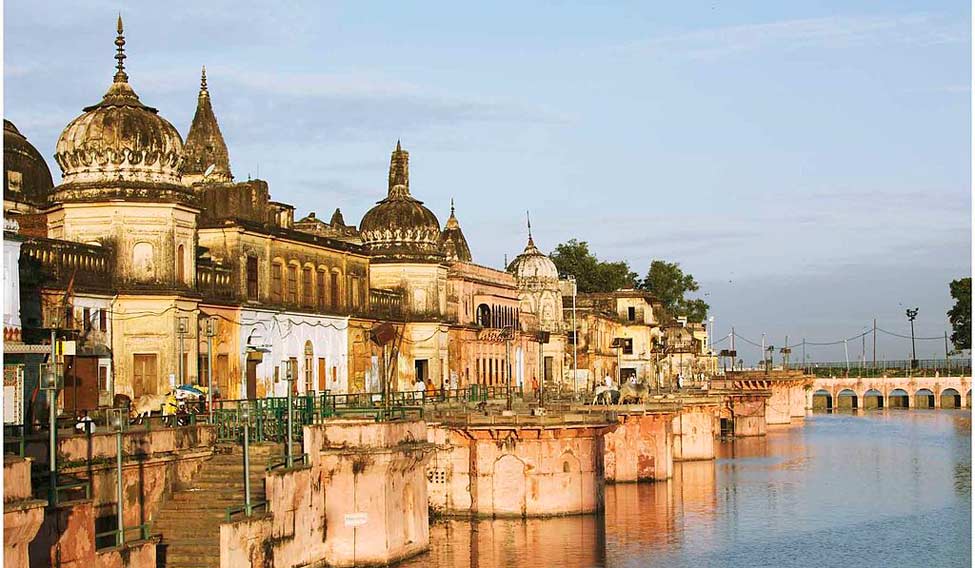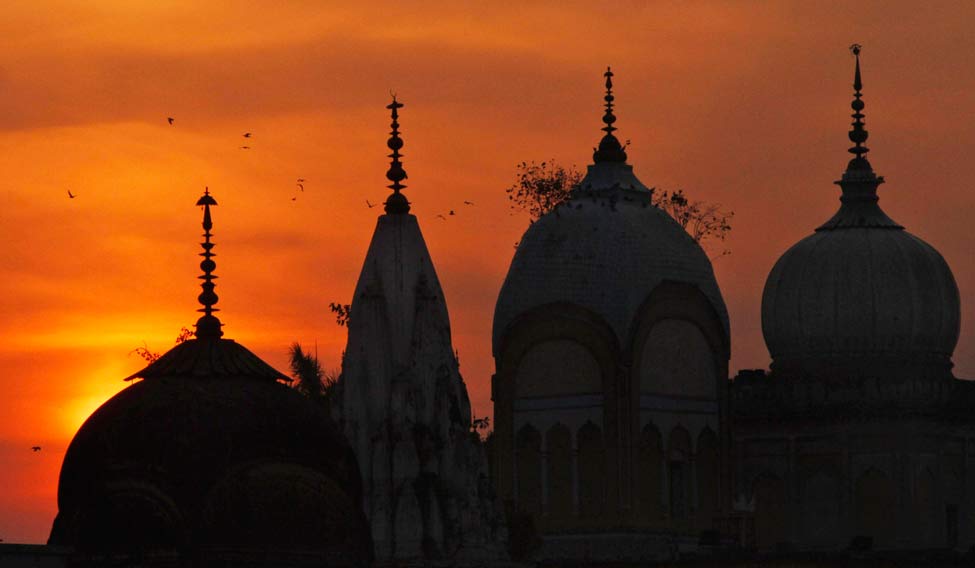One day short of 25 years of demolition of the 16th century Babri Masjid in Ayodhya, the Supreme Court began the final hearing in the case pertaining to the ownership of the 2.77 acres on which it stood.
On day one, Kapil Sibal, lawyer for the Sunni Waqf Board, urged the Bench—considering 13 appeals against a 2010 verdict of the Lucknow Bench of the Allahabad High Court—to defer the hearing to July 15, 2019. He cited the possibility of “serious repercussions outside the court whenever the matter is heard”.
The court set the hearing for February 8, 2018, after petitioners pleaded for “reasonable time to translate, file and serve the copies of all the exhibits and relevant documents” that were filed before the Lucknow Bench.
The bench had, on August 11, 2017, directed all parties to file translations of documents pertaining to the case on December 5. A bench comprising Chief Justice of India, Dipak Misra, Justice Ashok Bhushan and Justice Abdul Nazeer, was constituted and the case was meant to be fast-tracked with regular hearings. A two-year timeline was set up for the resolution.
According to Triloknath Pandey, appointed by the court to represent the forever minor Ram Lalla as his “best friend”, there are 27 parties to the case.
The Hindu Samaj led by many, including the Vishwa Hindu Parishad and the ruling BJP, believes Ayodhya is the place of birth of Lord Ram, and there stood “a grand temple on 84 black touchstone pillars constructed by Sakari Samrat Vikramaditya 2100 years ago. There were other temples of different ages. When the old ones were ruined by vagaries of nature including the Sarayu floods, new ones came up to mark the site.”
According to them, the temple at Ayodhya was demolished by Mir Baqi, commander in Babur's army, when he invaded India in 1526. The mosque was built two years later, suggesting that the dispute is as old as the demolished mosque was.
Records suggest that the first lawsuit was filed in January 1885, by Raghubar Das, the Mahant of Janmasthan. According to Champat Rai, joint general secretary of the VHP, between 1528 and 1949, 76 battles were fought and struggles were launched to reclaim the Ram Janmabhoomi site to reconstruct the temple. It was on the midnight of 22 December, 1949, that “Ram Lalla revealed himself at the place of his birth, under the central dome of the structure [the Babri Masjid]”. Jawaharlal Nehru was the prime minister of India.
To maintain law and order, the city magistrate attached the structure u/s 145 CrPC, appointed a receiver, and ordered that the gates be locked. However, a priest was allowed to go in and perform prayers twice a day.
In 1984, the first dharma sansad organised by VHP at Vigyan Bhavan, New Delhi, resolved to reclaim Ayodhya first and have a 'jan jagran yatra' to demand that the lock be opened. The yatra, however, had to be abandoned, though it restarted in small forms sporadically. In February 1986, the district judge of Faizabad ordered the locks to be opened. That was a time when the Hindu society was highly charged, with right wing leadership fanning the flames.
Enthused, the VHP had the first master plan of a grand Ram Mandir drawn, a wooden model was made, and the first steps towards construction began by way of getting bricks from Ram devotees across the country. It was to show the spread and scale of support that the temple construction had. It was also about Hindu supremacy, in a way avenging what they thought was a historical wrong.
 (File) Ayodhya
(File) Ayodhya
One thing led to another, communal passions were churned, politics played out, leading to the demolition of the mosque on the evening of December 6, 1992. Prime Minister P.V. Narasimha Rao could do nothing to control the situation. Many BJP stalwarts were not just mute witnesses, but also active participants.
VHP sources say there were many pointers to the existence of a temple; 250 Hindu artifacts, found in the rubble, are exhibits in court.
Ram Lalla is now seated under a makeshift tarpaulin roof exactly at the spot where he “revealed himself”, and by a Supreme Court order, the status quo of that place is maintained now, in high security. The government also acquired land around the demolished structure, even as the court allowed daily worship.
Former president Dr Shankar Dayal Sharma referred a question to the Supreme Court under Article 143 (A) of the Constitution of India. The question was, “whether a Hindu temple or any Hindu religious structure existed prior to all this?”Also, the acquisition by the Central government was legally challenged.
The Supreme Court heard all the petitions and let the Lucknow Bench of Allahabad High Court decide the title of the disputed site and answer the special reference made by the president.
A three-judge (two Hindus and one Muslim) full bench started hearing the matters in 1995. Issues were re-framed. Oral evidences were recorded.
In August 2002, the bench ordered Ground Penetrating Radar Survey (GPRS) of the site which was conducted by the Tojo Vikas International with its expert from Canada. The expert mentioned in his report, the existence of a huge structure extending over a large area underneath the demolished structure, scientifically proving that the Babri Masjid was not built on virgin land as was claimed by Muslim organisations in their civil suit filed on December 1961 before the civil judge of Faizabad. The expert also gave his opinion that the GPRS report should be verified through scientific excavation.
In 2003, the High Court ordered the Archaeological Survey of India (ASI) to excavate the site scientifically and verify the GPRS report. The excavation was conducted in the presence of two observers appointed by the court (two Additional District Judges of Faizabad). The parties concerned, their counsels, their experts/representatives were permitted to remain present during excavation. To maintain impartiality, it was ordered that 40 per cent of the labour would be Muslims. Minute-to-minute videography and still photography of excavation were done by the ASI.
“The excavation was eye-opening. Many walls, floors, and two rows of pillar-bases at 50 equidistant places were found. A Shiva temple was also seen. The GPRS report and the ASI report are now part and parcel of the High Court records,” says VHP's Champat Rai.
After 40 years in the district court and 20 in the High Court, the verdict was pronounced in 2010. The high court had ruled that 2.77 acres be divided equally among the Sunni Waqf Board, the Nirmohi Akhara and the infant Ram Lalla, who was awarded the central one-third.
All the three parties appealed against the 2010 verdict. These appeals are being heard now, and all the parties have imposed full faith in the Supreme Court that will decide who—or who all—will own that land.
The BJP is under pressure to unveil the grand Ram Mandir at that disputed spot.
Meanwhile, senior BJP leaders including Lal Krishna Advani were tried for conspiracy in the demolition, and were absolved by a special court in 2001. But, in April 2017, the Supreme Court revived the criminal conspiracy charges; the case is on in Lucknow.
The final hearing has only just begun, with the haggling over time to translate documents that were submitted to the Lucknow Bench of the Allahabad High Court (which gave the verdict to trifurcate). However, Triloknath Pandey (appearing for Ram Lalla), told THE WEEK, “We have one truckload of documents for this case, for that is what we took to Lucknow Bench of the Allahabad High Court. That judgment (in which the land was divided among the three main parties) is all of 10,000 pages. In that order, the honourable justices have included relevant quotes in Hindi, Urdu, Farsi, Sanskrit etc along with their English translations.”








